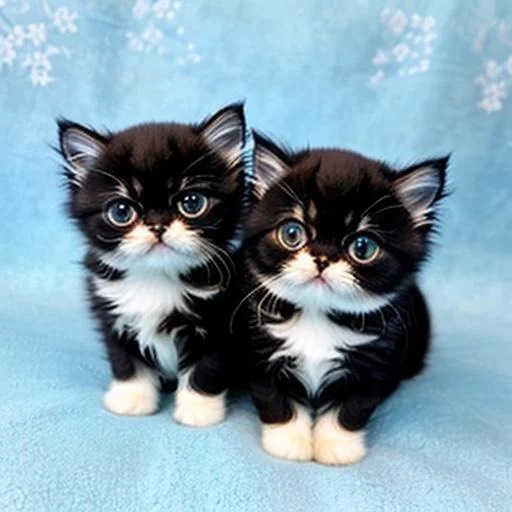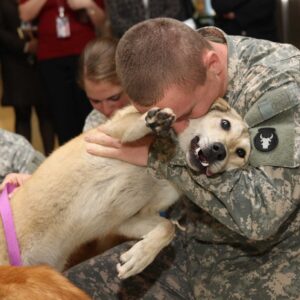
Persian cats, with their luxurious long fur and regal appearance, have captured the hearts of cat lovers around the world.
They are one of the oldest and most beloved cat breeds, with a fascinating history that stretches back centuries.
In this article, we will delve into the origin of Persian cats, their journey through history, their unique traits, and the challenges they face in the modern world.

The roots of Persian cats can be traced back to ancient Persia, which is present-day Iran.
These enchanting felines were highly esteemed in Persian society, often associated with royalty and aristocracy.
Their elegant appearance and calm demeanor made them treasured companions for the nobility.
Persian cats were not only pets but also symbols of prestige and luxury.
Kings and queens cherished them, and many legends and stories featured these majestic creatures, further elevating their status in Persian culture.
The modern Persian cat’s appearance is the result of selective breeding over centuries.
Their long, flowing coats and distinctive features were carefully cultivated through generations of breeding programs.
You May Like: How to Identify a Persian Cat
Persian cats are known for their large, expressive eyes, flat faces, and gentle personalities.
Their luxurious fur comes in various colors and patterns, making them captivating and unique.
In the 1600s, explorers and traders brought Persian cats to Europe, where they quickly gained popularity among the elite.
Their elegance and charm made them sought-after pets among European aristocrats.
It wasn’t until the late 1800s that Persian cats made their way to America.
They quickly became a favorite among cat fanciers, and their popularity soared throughout the 20th century.
Persian cats have left a significant mark in popular culture, appearing in movies, television shows, and advertisements.
Their luxurious appearance and calm demeanor make them perfect for the spotlight.
Today, Persian cats remain a beloved pet choice for many households.
Their friendly and affectionate nature and compatibility with indoor living make them ideal companions for families and individuals alike.
The long fur of Persian cats requires regular grooming to prevent tangles and matting.
Daily brushing and occasional bathing are essential to maintain their luxurious coats.
Proper nutrition is crucial for the health and well-being of Persian cats.
A balanced diet, rich in protein and nutrients, supports their overall health and keeps their coat shiny and healthy.
Persian cats are brachycephalic, meaning they have flat faces, which can lead to respiratory issues.
It’s essential for owners to be aware of this vulnerability and provide appropriate care.
Their flat faces also contribute to dental problems, making regular dental check-ups and dental care crucial to their well-being.
Despite their calm demeanor, Persian cats are intelligent creatures.
They may not be as active or mischievous as some other breeds, but they display their intelligence in different ways.
Contrary to the belief that they are aloof, Persian cats can form strong bonds with their owners.
They enjoy affection and companionship, making them loving and devoted pets.
The stunning variety of coat colors and patterns is one of the defining features of Persian cats, making each one truly unique.
Persian cats are known for their sweet and peaceful temperament, making them excellent companions for a relaxed and comfortable lifestyle.
The CFA holds prestigious cat shows where Persian cats are evaluated based on breed standards, temperament, and overall health.
Judges assess various aspects of Persian cats, including their coat, color, eye shape, body structure, and temperament, to determine the winners.
For those interested in adopting a Persian cat, animal shelters and rescue organizations are excellent places to find loving feline companions in need of a forever home.
Owning a Persian cat comes with responsibilities, such as regular grooming, proper nutrition, and providing a safe and loving environment.
Responsible breeders prioritize the health and well-being of the cats, ensuring they are free from genetic issues and promoting a sustainable population.
Inbreeding can lead to health problems, so responsible breeders work to maintain genetic diversity in the Persian cat population.
Various organizations and breed enthusiasts are dedicated to preserving Persian cats’ unique traits and history for future generations.
Efforts are underway to address health concerns and maintain the overall well-being of Persian cats as a breed.
Persian cats have a rich and captivating history, starting from their regal roots in ancient Persia to becoming beloved pets worldwide.
Their beauty, elegance, and calm nature continue to win hearts, making them cherished companions for many cat lovers.
You May Also Like: Tortoiseshell Persian Cats: A Beautiful and Unique Feline Breed
The Persian cat was born in ancient Persia, which is modern-day Iran. They were highly esteemed in Persian society and often associated with royalty and aristocracy.
No, the Persian cat is not a natural breed. Their elegant appearance and long fur are the result of centuries of selective breeding by humans.
The Persian cat myth refers to the misconception that these cats are aloof and distant. In reality, Persian cats can be affectionate and form strong bonds with their owners, displaying a gentle and calm demeanor.
Yes, Persian cats have an ancient lineage, dating back hundreds of years to their origins in ancient Persia. They have been treasured companions of royalty and aristocracy throughout history.
Persian cats originated in ancient Persia, with a history that spans back centuries. The exact date of their origin is difficult to determine, but they have a rich and captivating history.
The African wildcat (Felis silvestris lybica) is considered one of the most ancient feline species and is believed to be the ancestor of domestic cats, including Persian cats. It is among the oldest feline species still in existence today.





